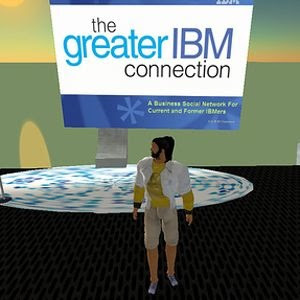
With all the so-called Virtual World Experts out there "speaking", this is one of the few true experts PaymentGuy recommends listening to; "One of the unexpected parts of my time at Linden Lab was public speaking. Lots of public speaking. It is, of course, Beth Noveck's fault. When Philip and I spoke at the first State of Play conference, we had the opportunity to write white papers about the talks we gave. I thought it was a great opportunity, so I wrote "Escaping the Gilded Cage," which went on to appear in both the New York Law School Law Journal and in a book from MIT press. When I sent it in to Beth, she liked it enough to invite me to give a talk about it at NYLS. Then Yochai Benkler invited me to speak to his class at Yale Law School. The rest, as they say, is history, as speaking became an important tool for evangelizing Second Life, inspiring new ideas, meeting smart people who could help solve challenging problems, and recruiting new employees. But speaking is not something of done separate from my time as a Linden, so I am tremendously excited to announce that Washington Speakers Bureau is representing me for speaking engagements. While I continue to learn and consider what will be next, I am thrilled by the chance to continue spreading the word about virtual worlds, their impact on learning and innovation, and how Second Life formed a basic part of our engineering process." From Cory Onrejka's Blog. And here is his profile from the speaker's bureau;
The Next IT Revolution - Web 2.0, video games, and virtual worlds are initiating the most disruptive information technology transition since the World Wide Web. Corporate and government leaders once again face complex questions around technology, innovation and competition. Cory Ondrejka brings unique experience and insight to the business challenges and opportunities inherent to these new technologies.
Building Innovative Organizations - Cory Ondrejka is an expert on the complex challenges of building innovation in distributed organizations that allows technology-savvy workers to thrive in a more connected workplace. As companies fully engage global opportunities, they face new hurdles and opportunities to integrate and collaborate with employees dispersed throughout the world, so understanding the deep connection between innovation and learning is critical.
Connection, Communication and Learning - Real-time collaboration technologies appearing in virtual worlds and on the web enable new modes of communication, both within organizations and between corporations and customers. User-generated content gives customers new methods for connecting with brands and sharing their opinions online. Cory Ondrejka discusses how interactions in games and virtual worlds provide a quantitatively different opportunity compared to the lightweight connections of a web impression, and offers strategies to take advantage of these opportunities to connect. Entrepreneurship in the Experience Economy - Online communities create opportunities for entrepreneurs to explore the zero-marginal cost experience economy. Whether in Second Life or Facebook, new entrepreneurs are building multinational teams to rapidly explore design space and business plans. Cory Ondrejka explains how organizations are able to take advantage of this entrepreneurial energy.
Virtual Worlds and National Security - The US State Department, Defense Department and Intelligence Agencies have all recognized the need to understand how virtual worlds impact national power. Cory Ondrejka's unique background allows him to bridge diverse worlds to bring critical insights to analysts and policy makers, focusing on the threats and opportunities created by games and virtual worlds.
About Cory Ondrejka - The world’s preeminent authority on the economic and technological impact of virtual worlds, Cory Ondrejka offers an exciting look at what’s ahead and how it will affect business and society. A Virtual Pioneer: As co-founder and CTO of Linden Lab, Cory Ondrejka has long been an evangelist for the power of virtual worlds. A relentless innovator, he led the team that collaborated in unprecedented ways to solve impossible problems—taking the power of the virtual world to an extreme by co-opting the real and the virtual. His creation, Second Life, is not a game, but a tool set to build a virtual world, populated by “residents” who can then build whatever they want. Second Life shows just how powerful virtual words can be – it has transformed the way millions of people think about community, collaboration and entrepreneurship. The Opportunity of Virtual Worlds: People from around the globe are discovering worlds where the only limit is human creativity. People, ideas and cultures are interacting in ways never before possible. Ondrejka conveys the excitement about this new frontier where entrepreneurs are already exploring ways to generate real-world profits. These digital worlds face important decisions around whether, and how, to embrace these business activities. Companies are using a virtual presence to test new products, and these virtual-world technologies provide a platform for learning, innovation and competition whose potential is just being imagined. Third Life: In life after Linden Lab and Second Life, Ondrejka has become visiting professor at University of Southern California’s Annenberg School of Communication. He is passionate about showing organizations in the public and private sectors why virtual worlds are so important to their future—showing how they can be used to create a more connected workplace, the deep connection between learning and innovation, their impact on national power and much more.


















